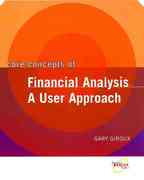Question
You need to read this article for you to answer the question on the last part PDAF and DAP in new budget? The Duterte administration,
You need to read this article for you to answer the question on the last part
PDAF and DAP in new budget?
The Duterte administration, through Budget Secretary Benjamin Diokno, proposed to Congress a whopping P3.35 trillion "budget for real change" for 2017. It is 11.6 percent more than this year's P3.002 trillion outlay.
Main thrusts. The bulk of the budget, technically called the General Appropriations Act (GAA), will be invested mainly in infrastructures, like airports, seaports, railways and roads, and in human capital, like education, health and social welfare.
All the branches and departments of the government got raises, with the Department of Education getting the biggest slice of P570.4 billion, 31 percent higher than its current budget.
The judiciary's share has been increased from P26.79 billion currently to P32.54 billion. Nonetheless, CJ Maria Lourdes P.A. Sereno asked the Department of Budget and Management (DBM) to fund 50 more family courts, in addition to the 48 funded this year. These courts were created by law in 1997 but were organized and funded only starting in 2016. She also asked for "child-friendly" equipment for these courts.
Using the record-high budget mainly for infrastructures and human capital is undoubtedly praiseworthy. But some lawmakers allege that the budget is peppered with the graft-prone Priority Development Assistance Fund (PDAF) and the discredited Disbursement Acceleration Program (DAP), an allegation vehemently denied by both Diokno and House Speaker Pantaleon Alvarez.
The allegation stemmed from the fact that each lawmaker was asked to submit to the DBM a list of projects worth P80 million to be included in the proposed GAA.
PDAF explained. To determine the validity of this allegation, it is necessary to visit Belgica vs Ochoa (Nov. 19, 2013) which held the PDAF unconstitutional, and Araullo vs Aquino (July 1, 2014) which declared four acts under the DAP (not the DAP itself) unconstitutional.
The first case, written by Justice Estela M. Perlas-Bernabe, explained that empowering legislators to specify projects to be funded from lump sums appropriated in the GAA, after the GAA has become a law, violates the principle of separation of powers.
Legislators are prohibited from participating or intervening in the implementation of the GAA, except for congressional oversight. They cannot determine the projects, or authorize fund releases, or identify government offices and nongovernment organizations to implement the law.
Budget items are required to have specific purposes, and as a rule, lump-sum appropriations are banned, except "calamity funds, contingency funds and intelligence funds." Under this "specific appropriation, stated purpose" rule enunciated by the Court, neither the president nor the legislators have any postenactment power to determine how such lump sums shall be spent.
Obviously, the lump sum ban and the "specific appropriation, stated purpose" rule were designed to prevent graft.
However, while the GAA is being worked on in the DBM, lawmakers may propose the inclusion of specific projects, and while still pending in Congress, it may be amended by them.
DAP explained. The second decision, penned by Justice Lucas P. Bersamin, declared unconstitutional four acts under the DAP.
The Constitution states, "No public money shall be paid out of the Treasury except in pursuance of an appropriation made by law." Also, "No law shall be passed authorizing the transfer of appropriations..." Under these provisions, money allotted for one program, activity or project (PAP) cannot be spent for another PAP even if both PAPs are in the GAA. Congress cannot even authorize "the transfer of appropriations" from one budget item to another.
However, the Charter allows one limited exception to that rule: "... the President, the President of the Senate, the Speaker of the House of Representatives, the Chief Justice of the Supreme Court, and the heads of the Constitutional Commissions may, by law, be authorized to augment any item in the general appropriations law (or budget) for their respective offices from savings in other items of their respective appropriations" (bold types mine). This exception is called the power of augmentation. Note that:
1) Only "actual savings" may be transferred from one budget item to another item in the GAA. Savings are "actual" only when "(a) the PAP for which the appropriation had been authorized was completed, finally discontinued, or abandoned; or (b) there were vacant positions and leaves of absence without pay; or (c) the required or planned targets, programs and services were realized at a lesser cost because of the implementation of measures resulting in improved systems and efficiencies."
Thus, the "act or practice" of transferring funds "prior the end of the fiscal year," which did not meet any of those three instances is unconstitutional.
2) Augmentation can be made only for items allocated within the same branch or office. Thus, the "act or practice" of transferring savings from the executive branch to Congress, or to the Commission on Elections, or to the Commission on Audit, being a "cross-border" transfer, is unconstitutional.
3) The funding of PAPs that are not covered by any appropriation in the GAA is also unconstitutional because augmentation can be made only from one existing item to another existing item in the budget.
4) Unconstitutional also is the use of unprogrammed funds in the absence of a legally-required certification by the national treasurer that the revenue collections exceeded the "total of the revenue targets."
Question:
In connection with the budget process, make a stand on whether PDAF and DAP should be continued. Defend your position by citing facts and evidence.
Step by Step Solution
There are 3 Steps involved in it
Step: 1

Get Instant Access to Expert-Tailored Solutions
See step-by-step solutions with expert insights and AI powered tools for academic success
Step: 2

Step: 3

Ace Your Homework with AI
Get the answers you need in no time with our AI-driven, step-by-step assistance
Get Started


